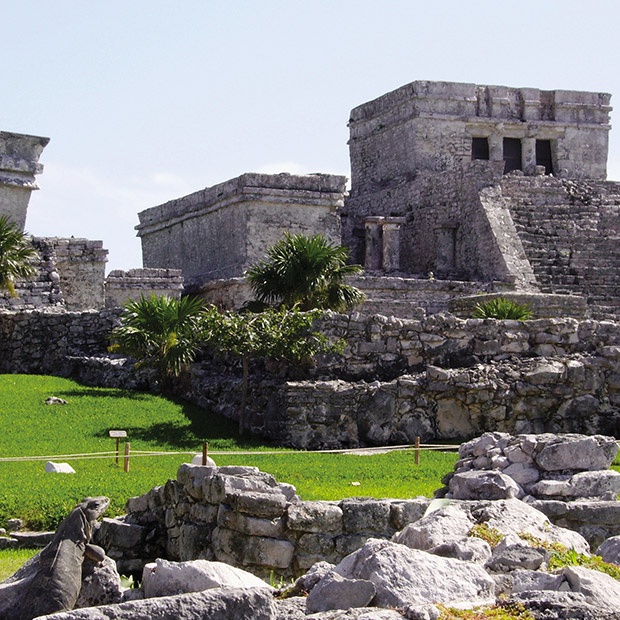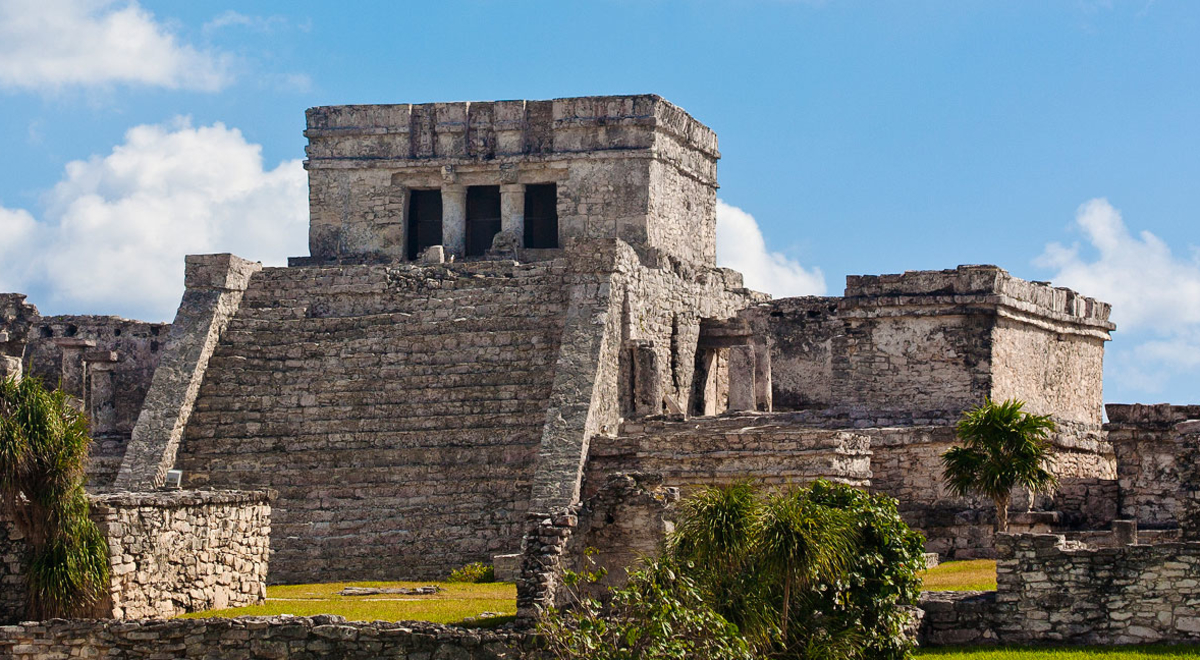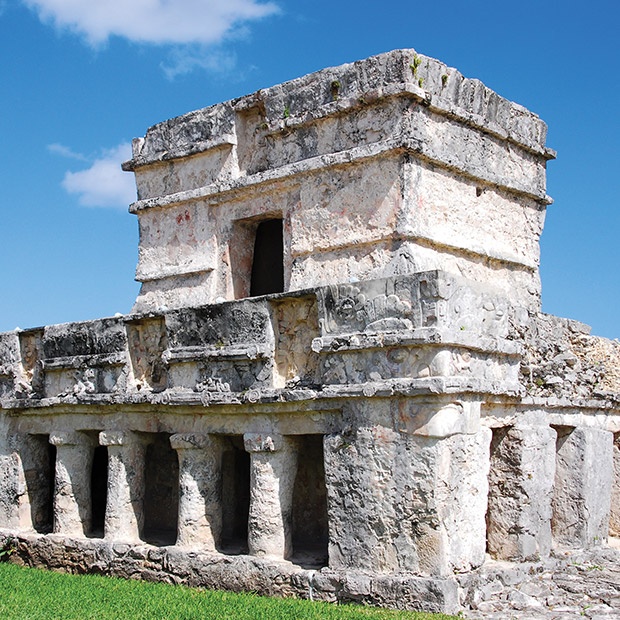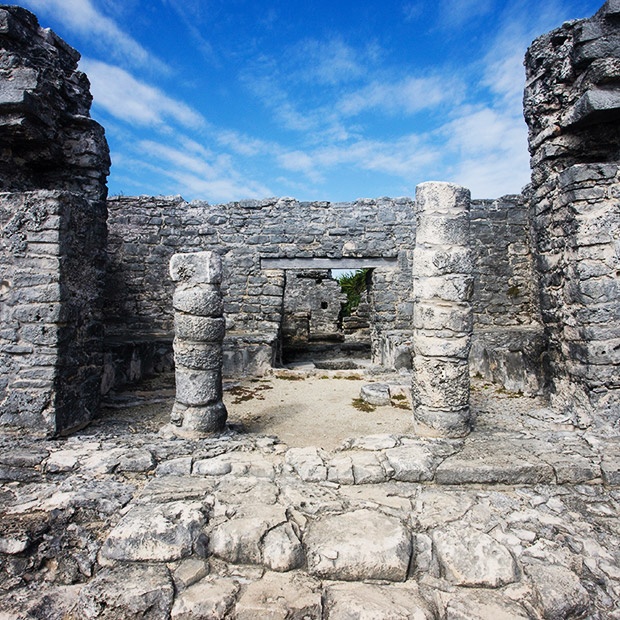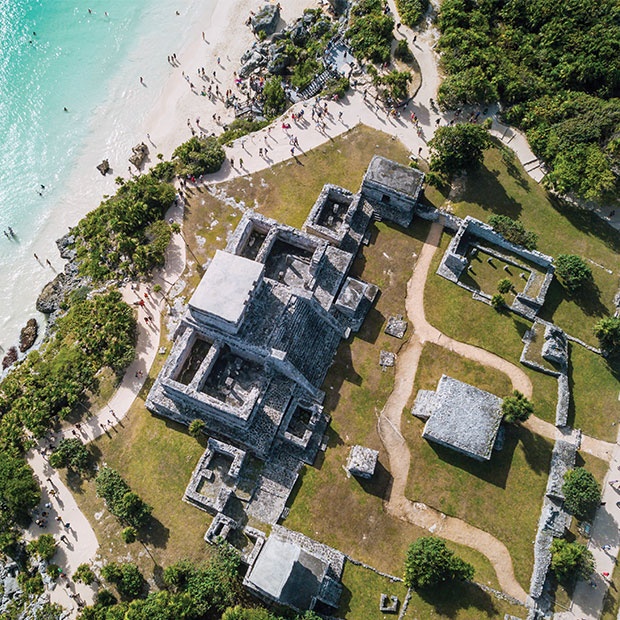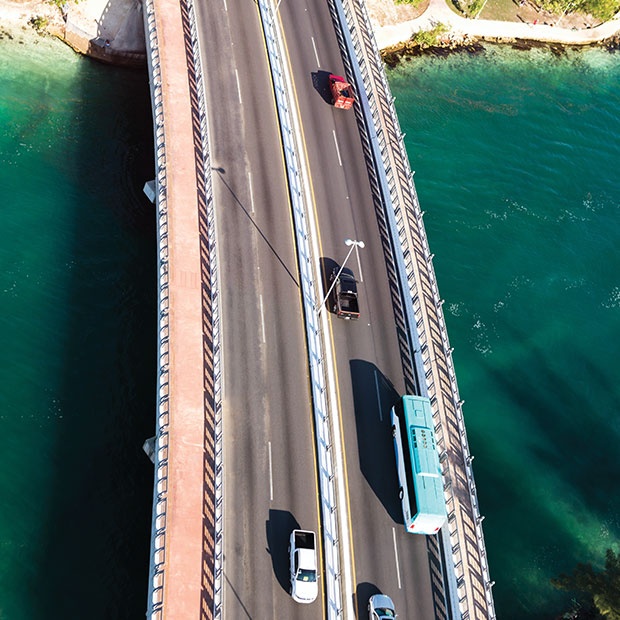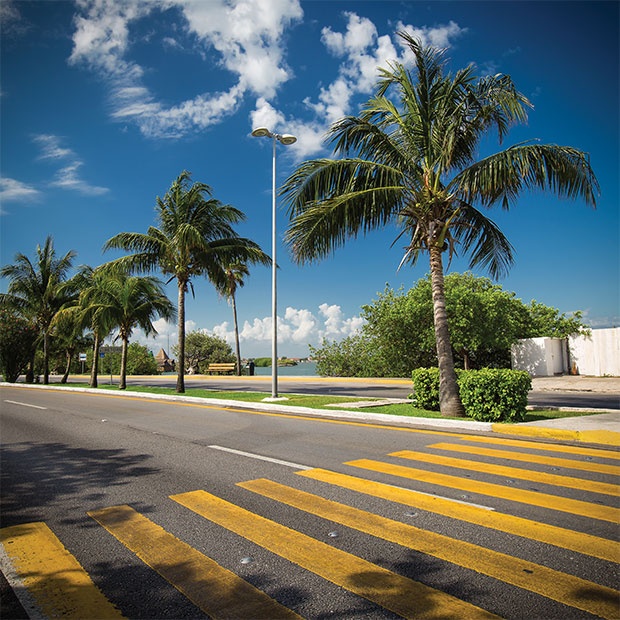Top Things to See in Tulum
1. El Castillo
The most iconic structure in Tulum’s walled city, El Castillo, stands 12 metres above rugged limestone cliffs, against the backdrop of a glittering blue ocean and white velvet beaches.
Built in stages, El Castillo is supported by a stone platform, topped with a palace and columns, supporting an upper temple. Inside, there is a beacon that was once used to help sailors navigate around the city’s bay at dusk.
2. Temple of the Frescoes
Just a few steps by the front of El Castillo, Temple of the Frescoes is one of most well-preserved buildings in the walled city. The temple was once an observatory for tracking the sun’s movement. Insides, there are two galleries with intact murals still bearing the paint from centuries ago.
3. Temple of the Descending God
An intricately carved façade of Tulum’s main god of worship, the Descending God, hangs upside down over the temple’s threshold, above a flight of staircase. The Descending God is supposedly associated with the setting sun, and this temple in Tulum was built facing sunsets, so its walls become illuminated in the evenings.
4. House of the Columns
A massive “L” shaped building complex with four rooms and a series of columns, the “house” was once Tulum’s palace and the residence of its leaders. Although the structure’s roof and upper floors have collapsed, the palace was at one time an imposing three-story building and the site of Tulum’s royal court.
Tulum Ruins Location
The Tulum ruins are located about 130 km south of Cancun, and 60 km south of Playa del Carmen.
Tulum Ruins Address: Carretera Federal & Cancún - Chetumal Km 230 307, 77780 Tulum, Q.R., Mexico
How to Get to the Tulum Ruins
By Bus
From Cancun International Airport, there are few direct buses to Tulum throughout each day. It’s around a two-hour ride, and a single ticket costs 242 pesos.
Alternatively, take a more frequent bus to Playa del Carmen for around 190 pesos, then take a transfer bus for an additional 50 - 80 pesos. Tickets can be bought online from ADO Bus’s website or at the terminals at Cancun International Airport and Playa del Carmen downtown terminal.
By Car
Tulum can be easily reached by car or taxi from Cancun International Airport via the 307 Highway southbound. It’s around an hour and a half to two-hour drive, and the trip will take you across Playa del Carmen and Akumal.
From Playa del Carmen, it’s about an hour’s drive. There are many police speed traps along the way, so beware of speed limits.
Private shuttle services are also available with most resorts in Cancun’s Hotel Zone.
By Guided Tour
By far the simplest way to arrange your visit to the Tulum ruins is to pre-book a guided tour. Your shuttle will meet you at your hotel or resort, and you'll be able to skip the line-up for tickets at the entrance.
Sightseeing Hours and Entrance Cost
Touring hours are from 8 a.m. to 5 p.m. Monday to Sunday. Entrance fee is 70 pesos. For an additional 20 pesos, you can take a short train ride to the archaeological sites from the ticket booth.
Local guided tours range between 200 - 700 pesos.
COVID-19 Health & Safety at Tulum
While the world continues to deal with the coronavirus pandemic, you can expect some changes to the usual experience at Tulum. At the time of writing, the ruins are open for visiting at reduced capacity, so we highly recommend arranging your tour before your departure to avoid disappointment.
You'll be required to wear a face mask inside your shuttle and anywhere physical distancing is a challenge. While hand sanitizer may be provided, we encourage you to bring your own bottle with you. You never know!
